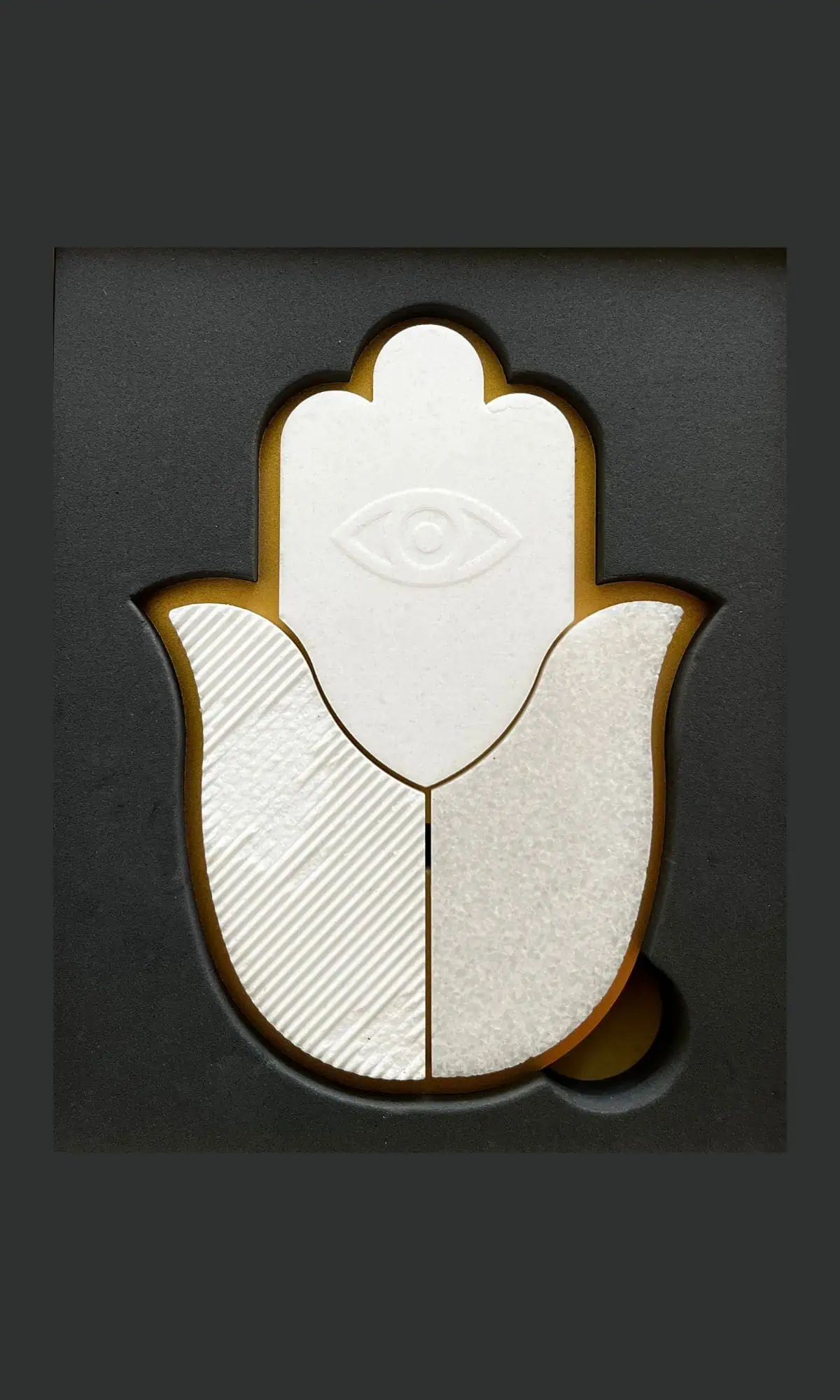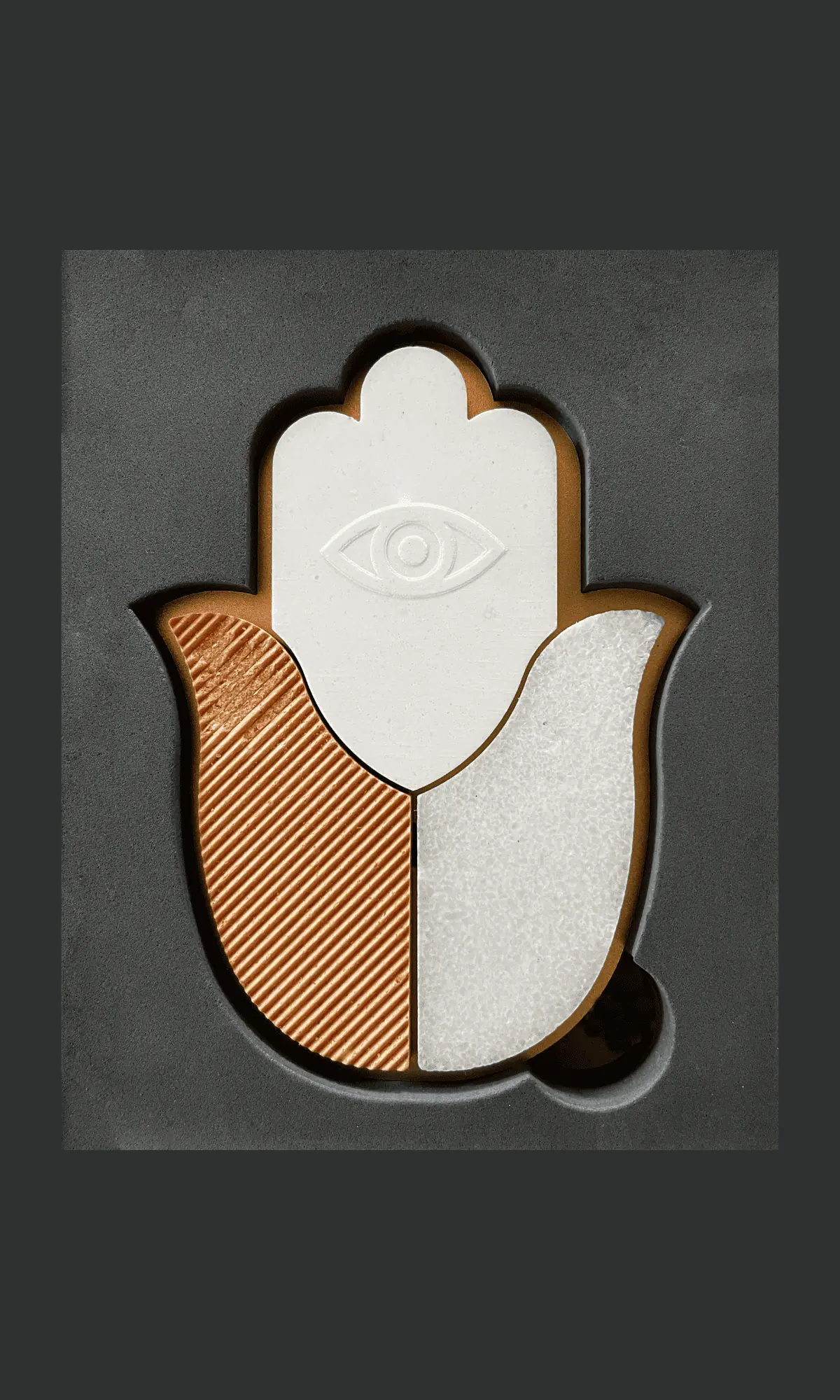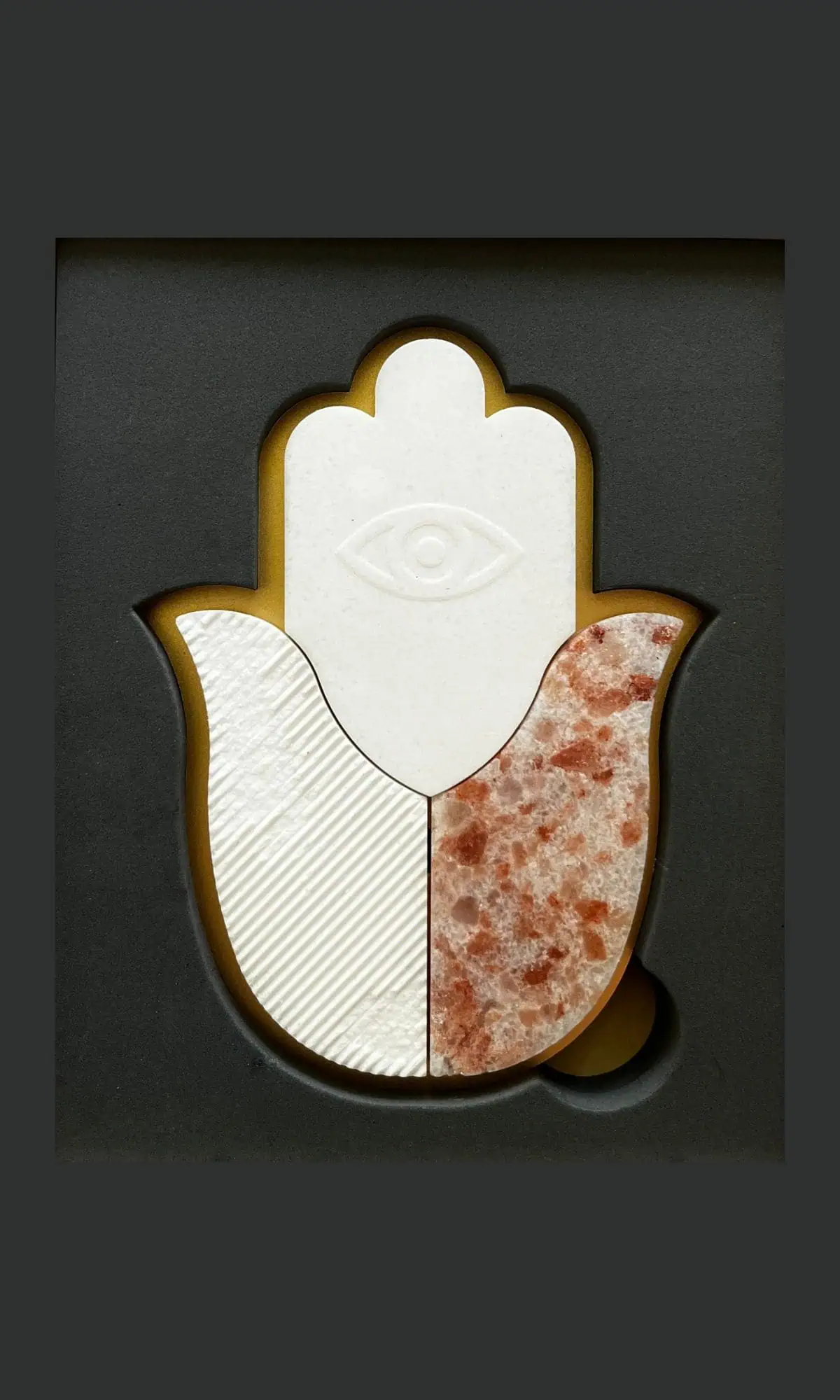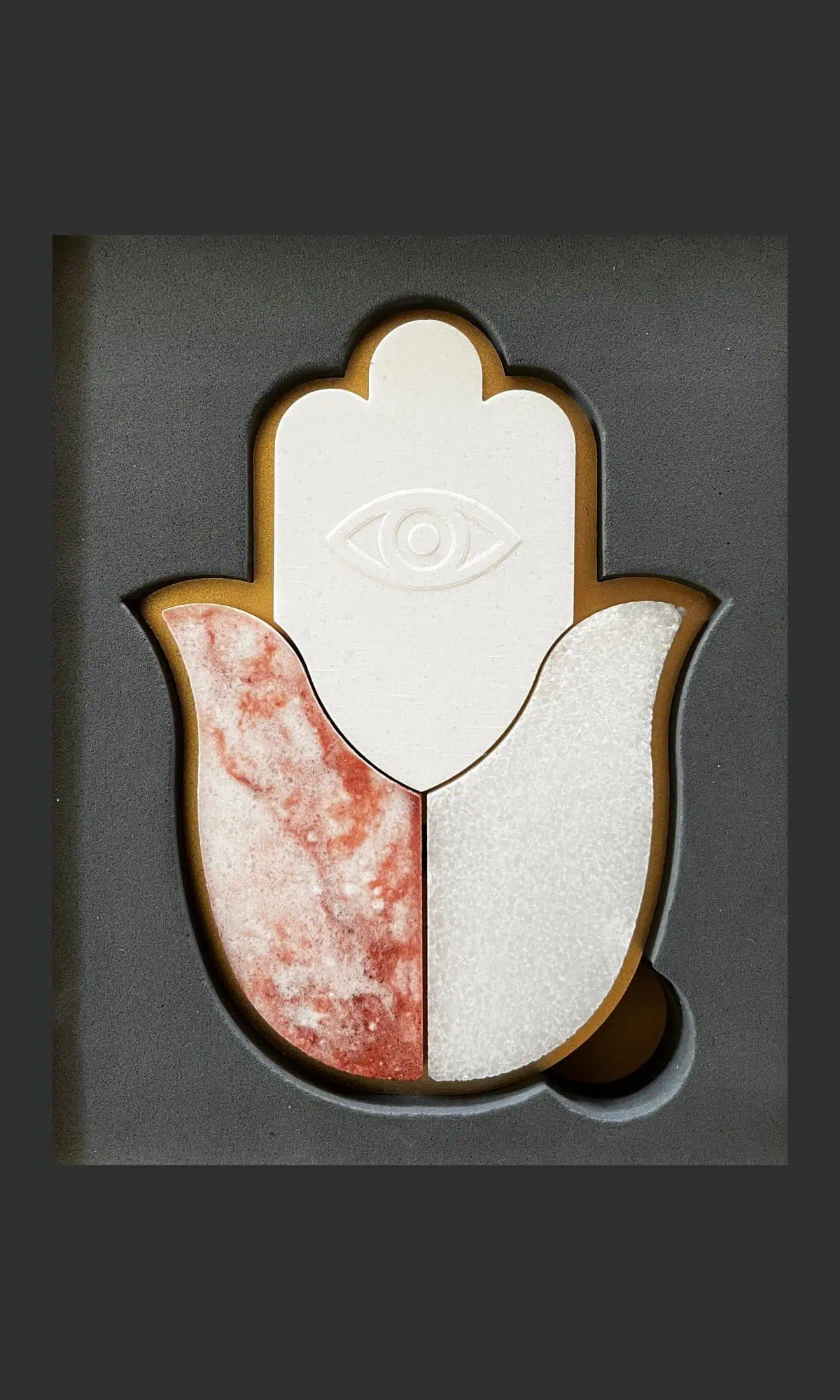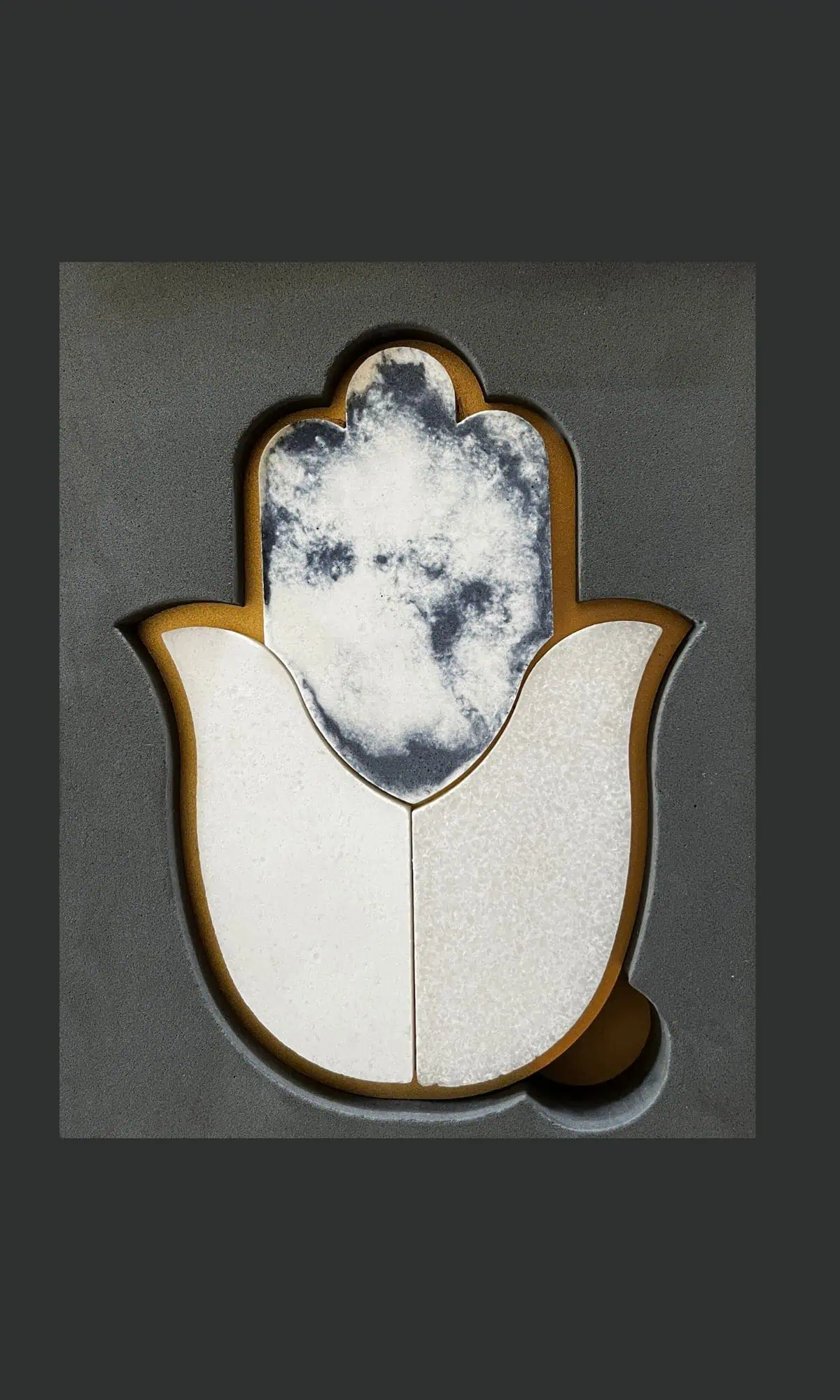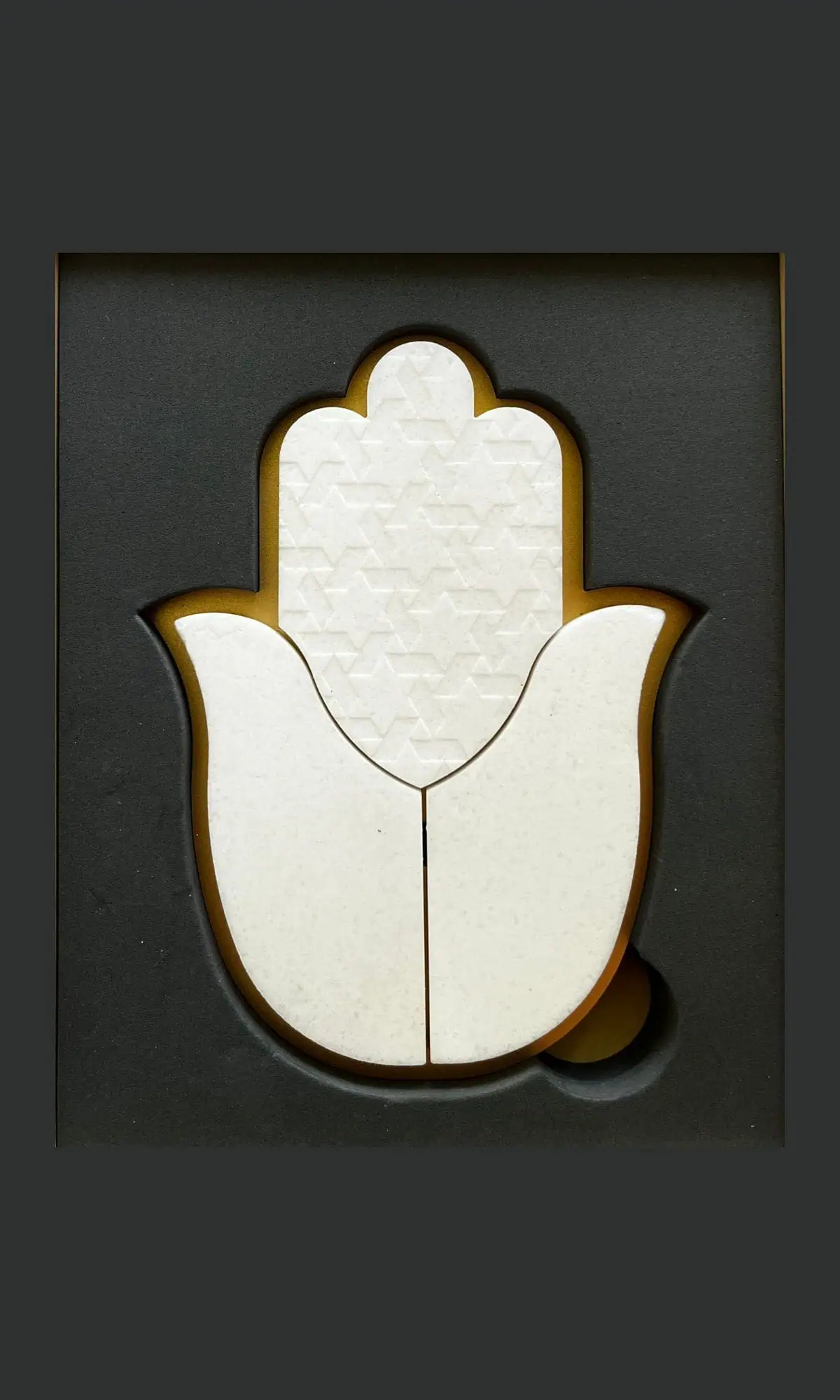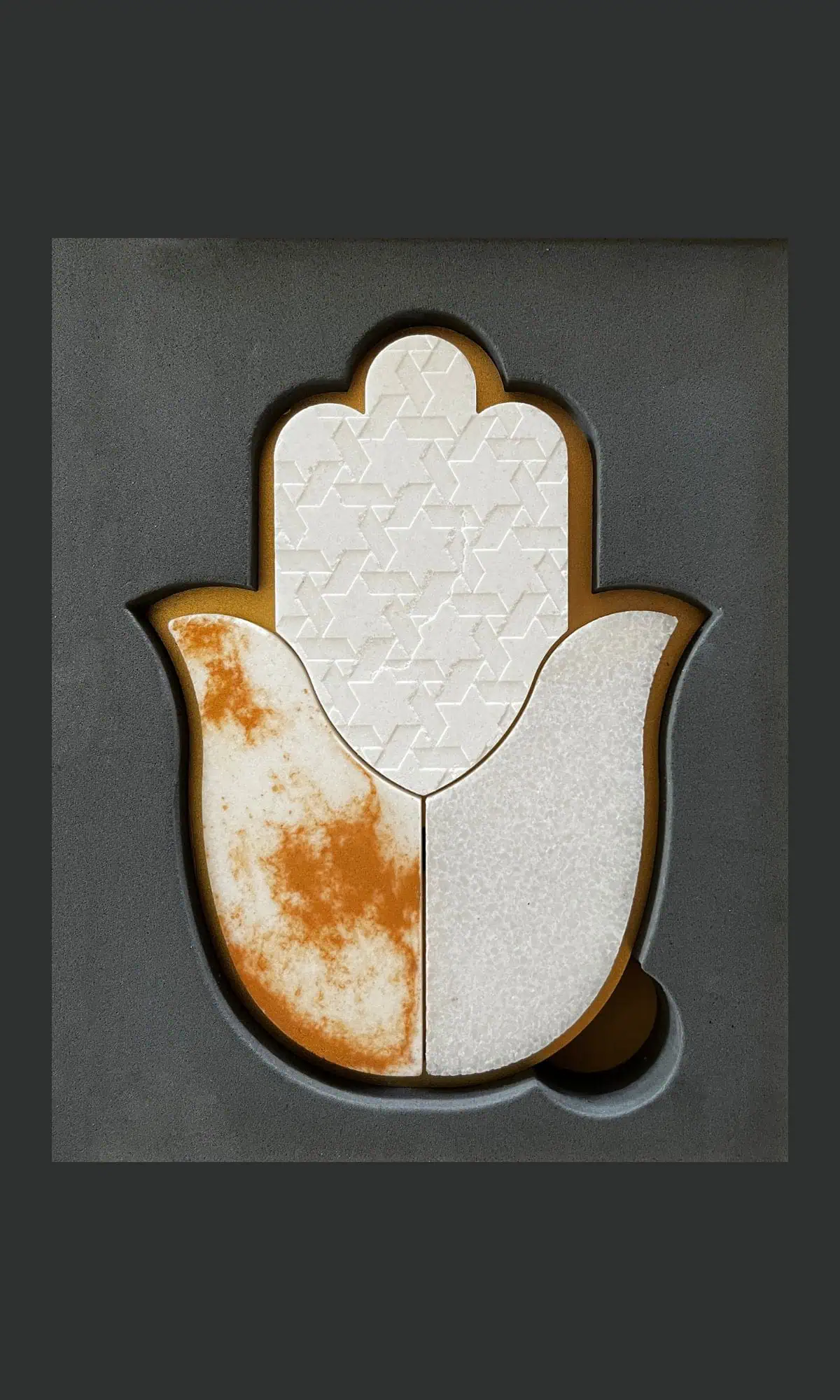
Hamsa Wall Decor
-
Hamsa Wall Decor Evil Eye
$146 This product has multiple variants. The options may be chosen on the product page -
Hamsa Wall Decor Evil Eye Golden
$146 -
Hamsa Wall Decor Evil Eye Himalayan
$146 -
Hamsa Wall Decor Evil Eye Pink
$146 -
Hamsa Wall Decor Golden
$146 -
Hamsa Wall Decor Indigo
$146 -
Hamsa Wall Decor Star of David
$146 This product has multiple variants. The options may be chosen on the product page -
Hamsa Wall Decor Star of David Golden
$146
My
Story.
Hi, I’m Lia Bruce, the body and salt behind SaltwareDesign. My professional path leads me through architecture studies at the Technion in Haifa, a bachelor’s degree in Fine Arts, and a master’s degree in Industrial Design at Bezalel Academy in Jerusalem. The combination of art, design, and eco living is expressed in my SaltwareDesign. My love affair with salt began as a child, inspired by my grandmother, who sewed salt into little cotton bags to be worn as protective amulets. As an artist I created installations with the raw material with a constant aspiration to give it a solid manifestation.
The groundbreaking technology that allowed her work to form the residual salt into such forms, textures, colors, and shapes is an integral part of her initiative of SaltwareDesign.
In 2015 Professor Daniel Mendler from the Institute of Chemistry at the Hebrew University answered a public call by the Israeli government for a practical solution to handle a vast amount of cooking salt that accumulates as a residue of the Dead Sea mining.
Professor Mendler and his team developed a sustainable technology that turns the salt into a robust, 100% green three dimensional object with no synthetic additives, durable to pressure and humidity, and manufactured in a very low energy consumption process.
As a designer,Bruce sought to merge salt’s scientific and technological challenges with its crucial significance in culture and found this life mission in the unique dead sea salts.
My interest in the mystical nature of salt grew as I collaborated with the Chemistry Institue at Hebrew university, which was looking for a way to reduce the environmental impact of salt mining in the Dead Sea. Combining creative impulse, engineering challenge, and my desire to heal our environment, I sought practical, innovative, and inspiring solutions. SaltwareDesign was born from this quest.
My Story.

What is the Meaning of Hamsa?
The Hamsa Hand is a palm shaped amulet, found throughout the Middle East and northern Africa, also known as a good luck charm, believed to confer protection upon its possessor and brings good luck, fertility and good health.
When the evil eye is added to the Hamsa ut is believed to protect from bad luck or the evil-eye with the most common being envious glares from those with ill intentions.
The Hamsa originated in the Middle East and is used in jewelry, paintings and tatoos. In fact, although the differences are sometimes subtle, each is created for a different purpose: a charm is worn to attract good luck; an amulet provides protection from danger; and a talisman is used to attract a particular benefit to its owner.
The Hamsa Hand in Judaism
The Hamsa hand symbol was adopted by the Sephardic Jewish community in Spain and North Africa during the middle ages. In the Jewish faith, the hamsa represents the hand of and named it the Hand of Miriam after the virtuous sister of Moses and Aaron.
Hamsa is also the Hebrew word for five (hamesh in Hebrew), the fifth letter of the Hebrew alphabet.
While some believe this represents the five fingers on the talisman, others associated it with the number five to represent the five books of the Torah: Genesis, Exodus, Leviticus, Numbers and Deuteronomy.
It also symbolises, “Hay”, which represents one of God’s holy names, and further reminds Jews to use their five senses when praising God.
Hamsa Jewelry The Hamsa today is popular as a protective charm in Middle Eastern, Far Eastern and Western cultures, and is incorporated into jewellery, wall hangings, key chains, baby carriages and other jewellery and decorative household elements. The Hamsa appears in two forms: stylized with two symmetrical thumbs and asymmetrical, with a clearly defined thumb and pinkie finger. Either form may be displayed with the fingers pointing up or down. The centre of the hand often contains further symbols, especially that of an eye, however different cultures may fill the hand with images relevant to them. Most Hamsa jewellery designs are made of silver, gold or other metals.
Who can wear a Hamsa?
In middle eastern societies it is very common to find men wearing large statement style Hamsa pendants.
In western societies it is mostly common in women’s jewellery design.Hamsa is common in many more designed objects like key chains, wall ornaments and textiles where it is used regardless to sex, colour and religion?
Hamsa as a Symbol of Human Unity
The Hamsa is in the process of transcending its origins of being a talisman that is thought to have protective qualities to become a gesture of hope for peace in the Middle East. Many Jews and Arabs wear and decorate the entrance to the home with the Hamsa to demonstrate the common ground shared by them, the common source from which their religions spring and to symbolise the common goal of peace in the region.
Hamsa Gifts
Hamsa is a very common gift in many societies. Though originally oriental, nowadays it is very common to find in the west. It is considered ethnic and a beautiful home décor or amulet to take with you. SaltwareDesign offers a variety of Hamsa designs. The artifacts are made of salt from the Dead sea and the Holy Land which makes it even more special and with deep meaning.
FAQ
Are the products really made of pure salt?
Yes, the products are made of NaCl 100%pure Dead Sea salt.
I add natural pigments ,dried flowers or metal chips for decoration.
How come it is not melted?
Saltware is safe to exposure to heat and up to 75% humidity.
(It is important to keep the product in an environment up to that humidity degree).
This is thanks to its innovative processing.
I use eco- friendly sealer to give it extra protection from dirt.
Is Saltware breakable?
Yes, it is made of a natural mineral and may break like ceramics, glassware etc.
Since the processing is low- energy consuming ,there are no hot tempratures envolved which
makes it even more vulnerable then what it looks like. Handle with care !
How can I clean my product?
Saltware cannot be washed under flowing water or dishwasher.
For cleaning use soft dump cloth. Don’t scratch or use abrasive fabrics.
Only metal parts which can be separated, may be cleaned with warm (even hot) water.
Put the metal part in a bowl and pour hot water on it. Take out with a spoon (as the metal may become hot) and dry thoroughly with soft cloth or paper immediately after.
If the candles you have used have been dripping immensely, you can try putting the metal seats ONLY in freezer for couple of hours.
It helps detaching the wax from the metal. Use tooth stick or you finger tips. Make sure not to use sharp tools, as they would scratch the seats.
Do not put the candles on the salt-made parts-always use the metal seats.
What is the best way to keep my Saltware?
Saltware is safe to exposure of up to 75% humidity.
Beyond that it is better to keep it inside its original box.
Don’t worry – it won’t be melted even if it was exposed to higher humid level.
Just wipe the dew drops that may cling to its surface.
Nevertheless, if that occurs it means the humidity exceed 75% and it is advisable to keep it in a cabinet or in a box.
How to get stains off?
Since is is a pure clear white substance it can stained easily (just like white fabrics as cotton).
Most stains can be wiped off with soft dump cloth. Try to clean immediately after staining occurs.

